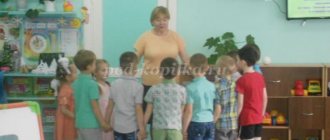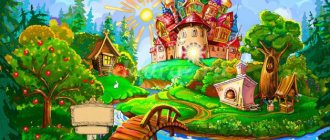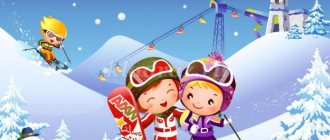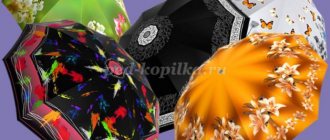Conversation about wintering birds in the preparatory group
Educational activity in the preparatory group “Conversation about wintering birds.”
Ignatievskaya Olga Ivanovna, teacher of MBDOU “Kindergarten No. 3 “Forget-Me-not”, Moscow region, Protvino
GOAL: to consolidate children's knowledge about wintering birds. OBJECTIVES: -be able to identify birds by appearance; -clarify the concept of “wintering birds”; -be able to talk about the behavior of birds; - through a work of art to cultivate an interest in nature. PRELIMINARY WORK: daily observations of birds in the lane; examining their appearance; behavior observation; looking at illustrations of birds; reading the works of G. Snegirev “Birds of our forests”, A. Alekseev “Bullfinch”; memorizing poems about birds. Material: video with images of birds.
PROGRESS.
Educator . What time of year is it now? (Autumn). Why do birds fly south in autumn? (The birds have nothing to eat; insects hide in the ground, in the leaves.) Educator. Do all birds fly away? What wintering birds do you know? (jackdaws, crows, woodpeckers, sparrows, bullfinches, tits, crossbills, magpies). Educator. Why don't they fly away? (They can feed on the seeds of cones, get insects from under the bark, and feed on leftover food). (The teacher shows a video with a picture of a sparrow and a tit.) Teacher. What birds do you see? How are they similar and how are they different? (Different colors, same size). Educator. What do you know about sparrows? (Sparrows are small gray-brown birds, they live in flocks, feed on insects and leftover food. By winter, they move closer to human habitation. During severe frosts, they spread their wings and sit ruffled.) Educator. Children, let's remember the poems about the sparrow. 1st child. The birds' nests are empty, the birds have flown away to the south. Our yard sparrow turned out to be the bravest of all. Kholodov was not afraid, he stayed with us for the winter. Snow covers the entire earth, The sparrows do not lose heart: They scurry merrily in a flock. 2nd child. Don’t be sorry for the bread crumbs, the sparrow deserves them. You set up a feeding trough for him, he will call his girlfriend, and his friends are all right there, the little ones are pecking happily. And a cheerful knock began - Knock-knock-knock, Knock-knock-knock. Educator. Listen, children, what I want to tell you about tits. Without tits, the winter forest seems dead. But as soon as the tits fly, the forest comes to life. Tits squeak and fly from branch to branch, from tree to tree, examining every crack in the bark to see if there is a tree seed. Is there a sleeping bug lurking somewhere? There are all sorts of tits in the flock: and blue tits. Both Muscovites and grenadiers with striped crests on their heads. In severe cold, tits fly to the huts, they wait for a piece of bread or grain to be placed in the feeder for them. Otherwise, the tits will freeze in the forest. (The teacher shows a video with images of crows and bullfinches).
Educator.
Name these birds. How do you differentiate them? (The crow is large with gray sides, the bullfinch is small with a red breast). Educator. What can you tell us about these birds? (In winter, crows stay closer to human habitation. They wander, flying to places where the winter is mild; only old crows do not fly over. In severe frosts, they sit closer to each other and hide their heads under their wings. There is such a sign: if crows fly in flocks in winter and strongly they croak, which means it will snow. A bullfinch with bright red plumage on its chest and gray-bluish on its back. On its head there is a red cap and a thick black beak. It feeds on the seeds of alder, maple, ash, and lilac. It loves rowan berries. Bullfinch birds are clumsy and slow. ) Educator. Guys, what bird breeds chicks in winter? Now I’ll tell you a riddle about her. Whose children, in the wilderness, in the bitter cold, are undressed and take off their shoes? (Crossbill). (The teacher shows a video with a picture of a crossbill) Educator. Who wants to tell about this amazing bird? (Crossbills live in flocks. Males are red-orange in color, females are greenish-yellow. The ends of the crossbill’s beak cross, which helps them get seeds from spruce or pine cones. Crossbills live where there are a lot of spruce and pine trees. Their nest is deep, warm. Some of all birds hatch chicks in winter). (The teacher shows a video with a picture of a magpie, a woodpecker)
.
Educator. Name these birds. What can you tell us about them? (The magpie is a large bird with beautiful black-brown plumage. The color of the feathers on the head, wings and tail is black, with a greenish tint, and on the sides it is white: hence its nickname “white-sided magpie.” The magpie’s tail is long, its legs are large, strong, the beak is curved towards the bottom. The magpie is a dexterous bird, very mobile, but at the same time cautious. Even from afar, it will hear extraneous sounds and begins to chirp. Because it loves shiny things, it is called the thief magpie. The woodpecker has beautiful motley plumage: The top of its body is black, there are white spots on the head and neck, the bottom of the body is white. The woodpecker has well-adapted legs and a tail, which serves as a support when climbing, a sharp and strong beak. The woodpecker is a very useful bird because it heals trees.) Educator. Maybe one of you can tell a poem about one of these birds. Child. I’m knocking on wood, I want to get a worm, Even though it’s hidden under the bark, You’ll still be mine! Educator . With the arrival of late autumn and the onset of winter, it seems that everything in the forest comes to a standstill. It turns out that this is all wrong. Today we learned how all birds adapt to cold weather. And together we will help them survive the harsh winter, we will feed them every day.
We recommend watching:
Integrated music lesson in the preparatory group of a kindergarten on the topic: Winter. Synopsis Synopsis of GCD in the preparatory group of kindergarten. Plasticineography “Snowman” Summary of a lesson on familiarization with the environment (school preparatory group). Topic: Wintering birds Questions about the painting “Tit on a Rowan Branch” for children of the senior preparatory group of a preschool educational institution
Similar articles:
Walks in the preparatory group. Card file with goals for December
Walks in the preparatory group. Card file with goals for January
Educational lesson on the topic “Winter” in the preparatory group
Walks in the preparatory group. Card file with goals for February







